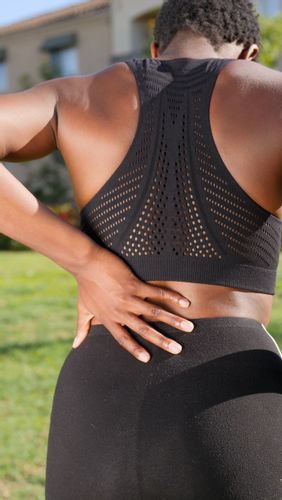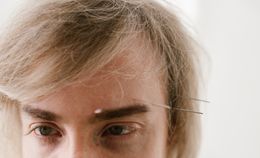Having a disc herniation can cause pain in the low back, down the legs, numbness, and tingling in the legs, and can lead to chronic problems that don't resolve by themselves. Typical treatments for disc herniation are steroids and/or epidural shots to numb the symptoms. This will lead to possible pain relief for 3 - 6 months maximally. The reason for this is that those shots mask the symptoms instead of getting at the root cause of the problem.
What makes treatment hard for disc herniation is the fact that the problem happened way before the symptoms occurred. When symptoms occur, it almost feels like it is too late to get good treatment. These are people that pick up a pencil and when they come back up, the muscles in their back tighten up so much that it can literally knock people on the floor. Below I outline the main causes of disc herniations that I see in my practice on a regular basis.
1. Decreased lower back curve (lumbar spine)
The lumbar spine should have a curve that outlines an ellipse. This ellipse has more curves in the lower lumbar spine (L4/5, L5/S1 - which is the most common disc herniation location). Decreasing the curve causes more stress and strain away from the joints and onto the cushion that holds the vertebrae together. This is called the lumbar disc. More pressure on the disc causes the annular fibers - the tough strong material holding the cushion together - to break down. When this breaks down, then the soft part inside - called the nucleus pulposus - that is more jelly-like will start to come out. When this comes out, this can press on the nerves right behind it. This is what causes pain/numbness tingling in the thighs, leg, and feet and usually does not get better by itself. This is why through specific treatment through Chiropractic Biophysics, the lumbar spine can be put into the right alignment, take tension off the nerves, and take pressure off the lumbar disc - thus eliminating pain coming from disc herniations. 1
2. Posture that shifts backward (swayback)
When people's middle part of their spine shifts backward, this will also decrease the lower back curve. This will cause the same problems listed above.
3. Compressive forces - sports injuries
People that constantly compress the spine, such as in football when people tackle each other, cause small injuries to the disc. This can lead to the same problems outlined above.
4. Improper squatting form
People lose the ability to squat due to sitting constantly. This will lead to improper movement of the low back. When the low back moves in a way away from normal, this will lead to overuse injuries to the muscles, joints, discs, ligaments, and other structures. This can also lead to the problems outlined above.
These are the 4 main causes of disc herniation that I see in the office constantly. This will not be said by other health providers. Why? Because usually what is blamed are the effects: tight muscles, old age, disc degeneration, spinal arthritis, "normal aging", runs in my family, tight piriformis muscle, weak core, etc.
The best treatment: chiropractic care that focuses on correcting the misalignment of the spine - most often decreased lumbar curve. The best way to do that is through Chiropractic Biophysics.
References:





















